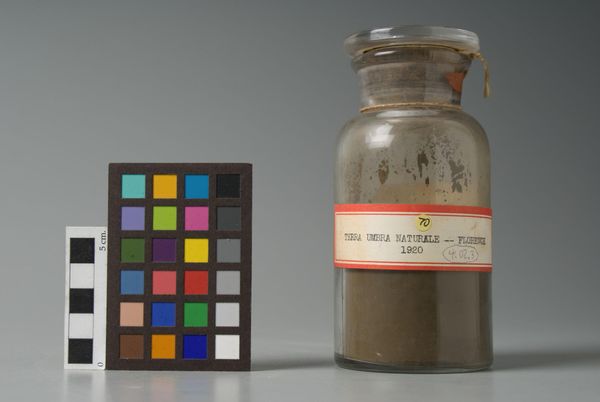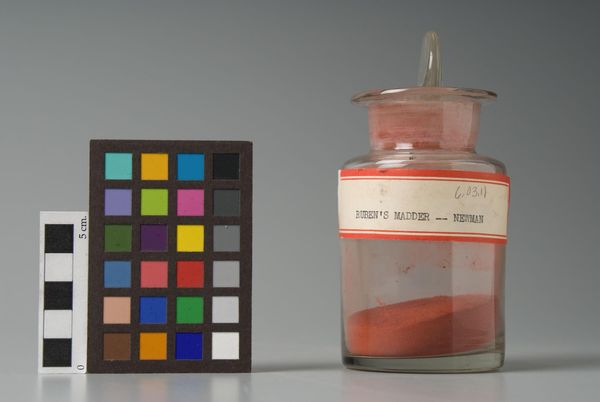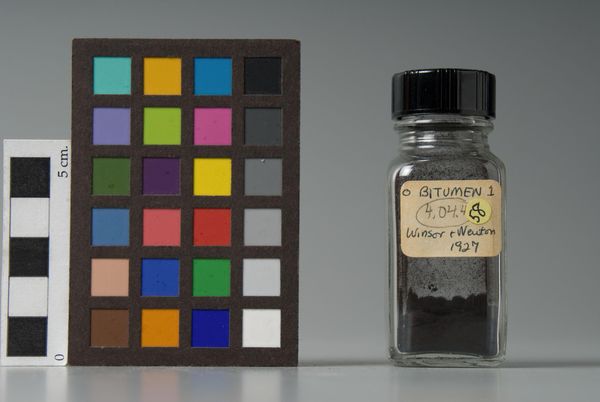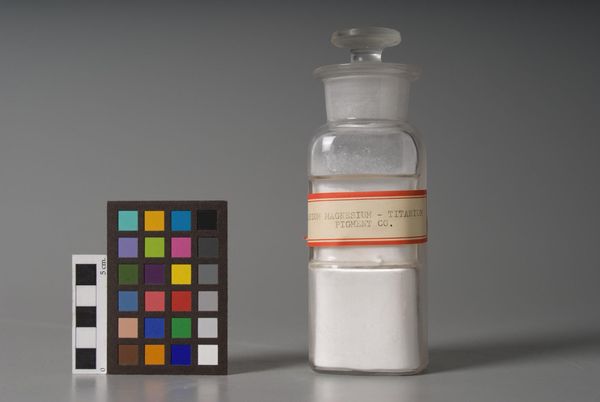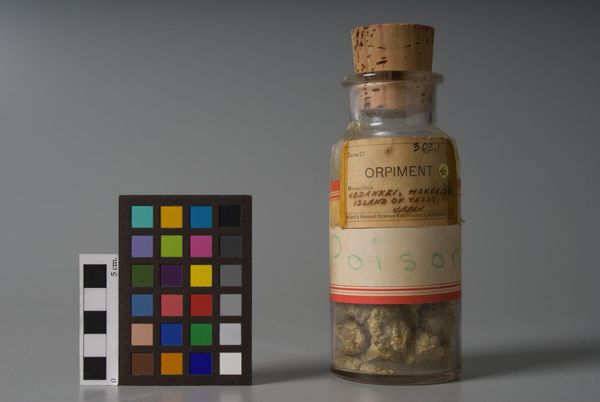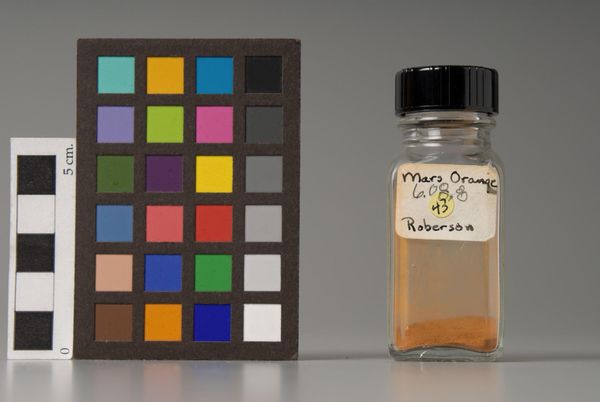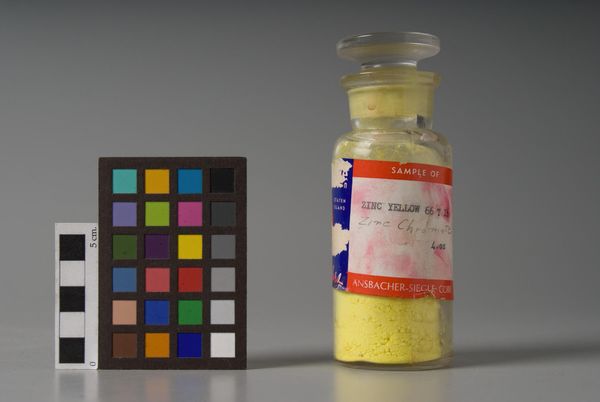
Quercitron Bark
Copyright: CC0 1.0
Curator: The artwork before us presents a curious object: a glass jar, manufactured by Skilbeck Brothers, containing Quercitron Bark. Editor: It feels so... clinical. The stark glass, the neat label. The bark itself seems almost sterile, devoid of natural context. Curator: This wasn't intended as an art object, of course. It's a sample, likely used for dyeing or medicinal purposes. Skilbeck Brothers were known for their contributions to the dyeing industry. Editor: The texture of the bark is compelling, though. All those tiny fragments, catching the light. There's a certain fractal beauty in the arrangement. Curator: Absolutely. And think of the trade routes, the colonial networks, that brought this bark from its source to a laboratory or workshop. This little bottle holds a wealth of socio-economic history. Editor: I find myself returning to the play of light on the glass. The reflections, the way it distorts the bark behind it. There's a delicate tension between transparency and opacity. Curator: It reminds us that even seemingly mundane objects can reveal complex narratives about science, industry, and global exchange. Editor: Indeed, it’s interesting to consider what significance can be found in the simplest forms and materials.
Comments
No comments
Be the first to comment and join the conversation on the ultimate creative platform.


